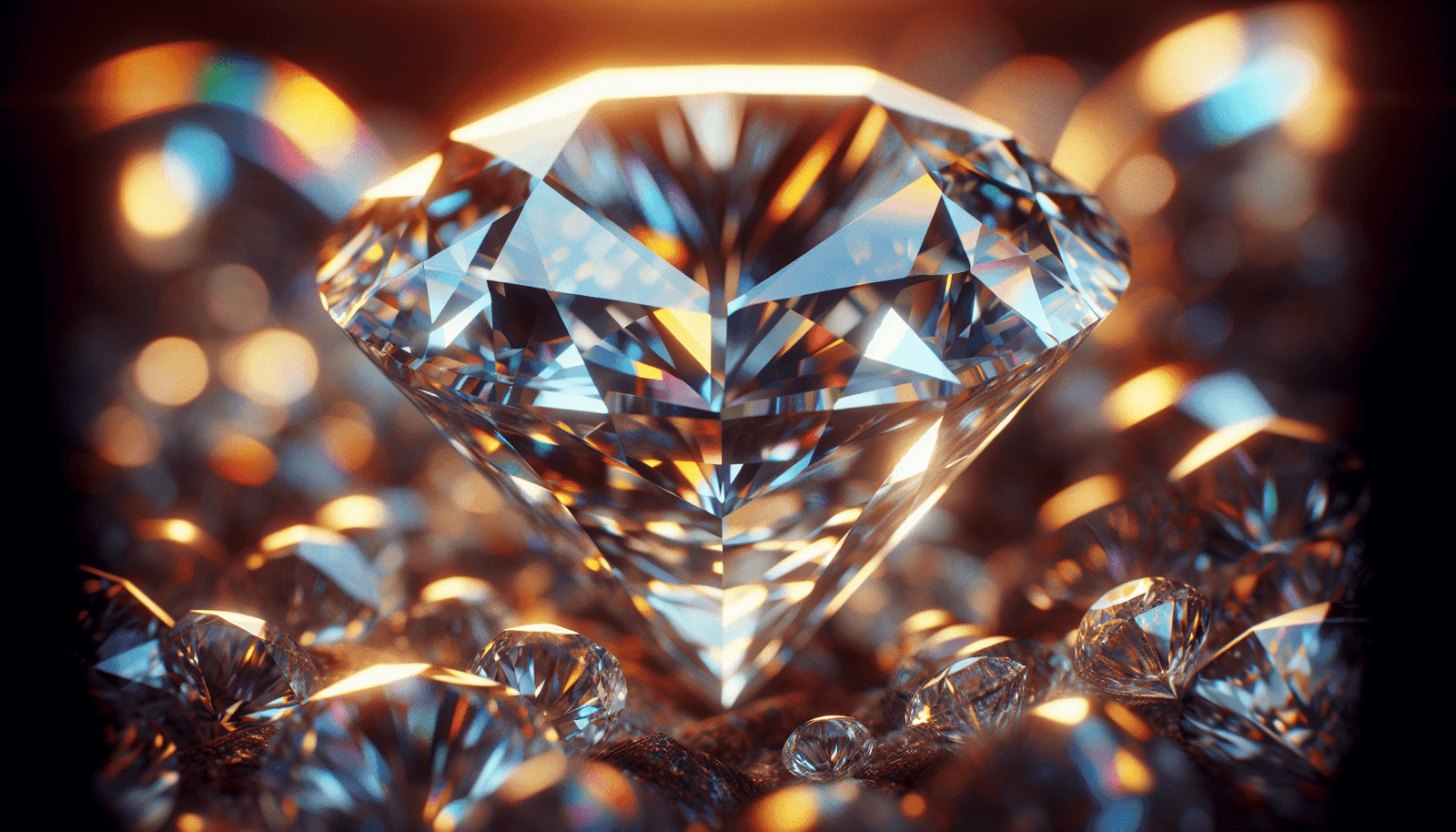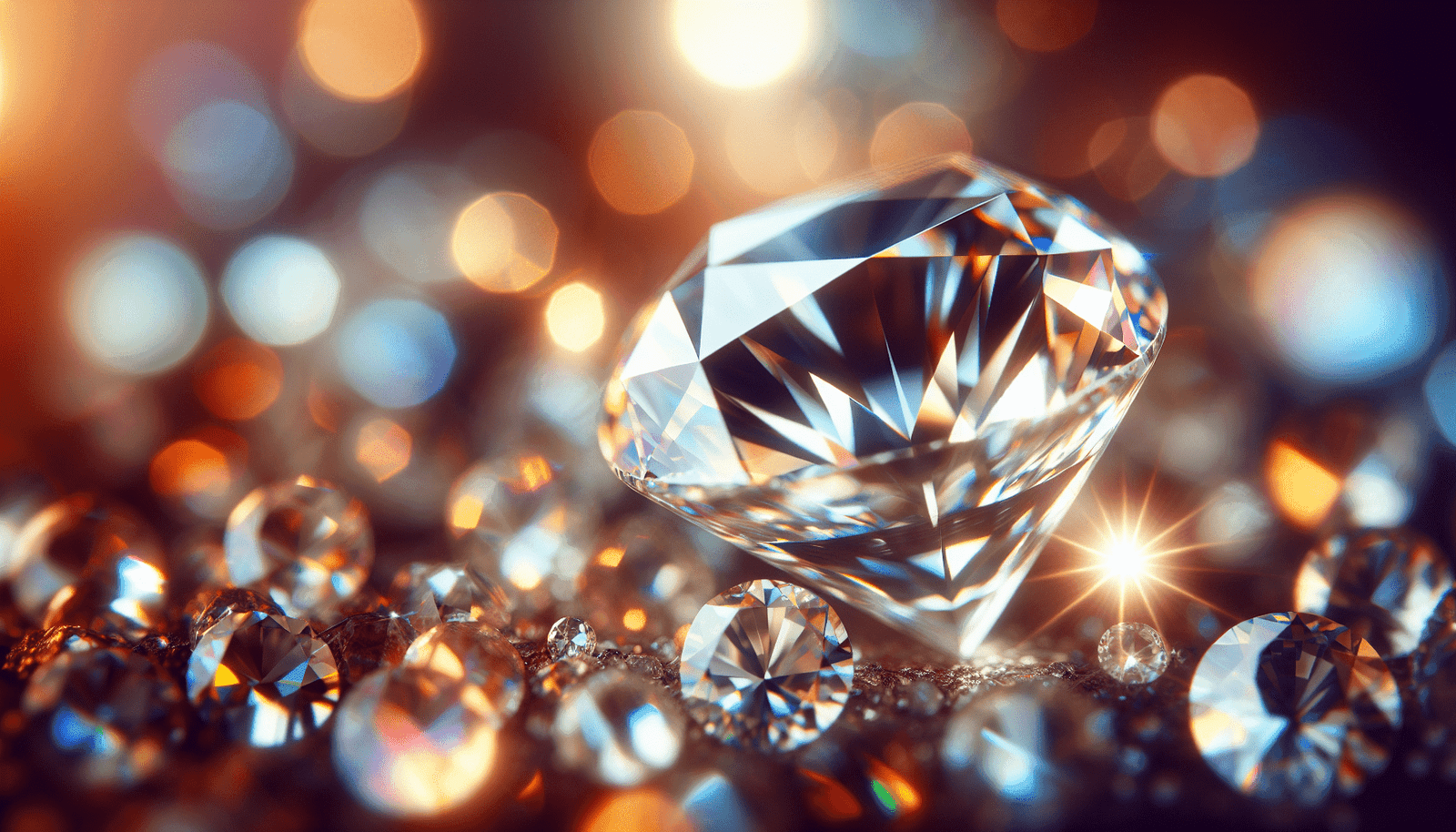Have you ever wondered where the purest diamonds in the world come from? It’s fascinating to think about, isn’t it? Those dazzling gemstones that make their way into jewelry stores have quite a journey behind them.

The Origins of Diamonds
To understand where the purest diamonds come from, we first need to dive into the origins of diamonds themselves. Diamonds form under immense heat and pressure conditions far beneath the Earth’s surface, making their formation process one of nature’s most extraordinary phenomena.
The Formation Process
Let’s take a brief look at how diamonds form:
- Carbon Source: Deep carbon sources, often from ancient seafloor sediment, become subducted beneath the Earth’s crust.
- Heat and Pressure: These carbon sources are subjected to temperatures over 1000 degrees Celsius and pressures 50,000 times that of our atmosphere.
- Crystal Formation: Over millions to billions of years, carbon atoms bond in a crystal lattice structure to form diamonds.
Journey to the Surface
Diamonds don’t just stay buried deep within the Earth. They are brought to the surface through volcanic eruptions, specifically in rocks called kimberlites and lamproites. These rocks cool and erode over time, eventually releasing diamonds.
A Global Look at Diamond Mining
So, where in the world are these coveted gemstones found? Let’s look at some of the most notable diamond-producing countries and regions.
Africa: The Heart of Diamond Production
Africa is synonymous with diamond mining, and for good reason. Several countries across the continent are major contributors to global diamond supply.
| Country | Regions | Notable Mines |
|---|---|---|
| Botswana | Orapa, Jwaneng | Orapa Mine, Jwaneng Mine |
| South Africa | Cullinan, Kimberley | Cullinan Mine, Kimberley Mine |
| Angola | Lunda Norte, Lunda Sul | Catoca Mine |
| Namibia | Coastal regions and offshore mining | Namdeb Project |
Botswana stands out, not just for the volume of diamonds it produces but also for the quality. Some of the world’s largest and most flawless diamonds have been sourced here.
Russia: The Cold Giants
Russia is another key player in the diamond industry. The Eastern Siberia region of Russia is home to the world’s largest diamond mines, operated mainly by ALROSA, which is one of the leading diamond mining companies globally.
| Mine | Location | Characteristics |
|---|---|---|
| Mirny Mine | Mirny, Yakutia | Largest open-pit mine |
| Udachnaya Pipe | Yakutia | Deep underground mine |
| Aikhal | Aikhal, Yakutia | Multi-pit site |
The frigid conditions and remote locations make mining in Russia challenging, but these obstacles haven’t stopped some of the largest and purest diamonds from emerging from the Siberian tundra.
Canada: The Northern Star
Canada has made significant strides in diamond mining, especially in the Northwest Territories. Canadian diamonds have gained a reputation for their ethical sourcing and environmental standards.
| Mine | Location | Special Features |
|---|---|---|
| Ekati Mine | Lac de Gras, NWT | First diamond mine in Canada |
| Diavik Mine | Lac de Gras, NWT | Operated as a joint venture |
| Gahcho Kué | 280 km northeast of Yellowknife | One of the richest diamond mines globally |
In harsh Arctic conditions, these mines produce some of the clearest diamonds with a relatively low environmental impact due to strict regulations.

Defining the Purity of Diamonds
When we talk about the “purest” diamonds, we’re referring to a combination of several characteristics that determine a diamond’s quality. The Gemological Institute of America (GIA) has established a grading system to evaluate diamonds based on the Four Cs: Cut, Color, Clarity, and Carat weight.
Cut
The cut is arguably the most important factor that affects a diamond’s brilliance. A well-cut diamond will reflect light optimally, creating that mesmerizing sparkle.
| Cut Grade | Description |
|---|---|
| Excellent | Reflects nearly all light, maximum brilliance |
| Very Good | Reflects most light, high brilliance |
| Good | Reflects a considerable amount of light |
| Fair/Poor | Reflects less light, compromised brilliance |
Color
Diamonds are graded on a color scale from D (completely colorless) to Z (light yellow or brown). The less color a diamond has, the more valuable and pure it is considered.
| Color Grade | Description |
|---|---|
| D-F | Colorless |
| G-J | Near colorless |
| K-M | Faint yellow |
| N-R | Very light yellow |
| S-Z | Light yellow |
Clarity
Clarity refers to the presence of internal or external imperfections, known as inclusions and blemishes, respectively. The fewer inclusions and blemishes a diamond has, the purer it is.
| Clarity Grade | Description |
|---|---|
| FL (Flawless) | No inclusions or blemishes visible under 10x magnification |
| IF (Internally Flawless) | No inclusions, very minor blemishes visible under 10x magnification |
| VVS1, VVS2 | Very, very slightly included (difficult to see under 10x magnification) |
| VS1, VS2 | Very slightly included (slight inclusions visible under 10x magnification) |
| SI1, SI2 | Slightly included (noticeable inclusions under 10x magnification) |
| I1, I2, I3 | Included (inclusions visible to the naked eye) |
Carat Weight
Carat weight measures the size of the diamond. Larger diamonds are rarer and therefore more valuable. However, size doesn’t always equate to purity.
| Carat Weight | Relative Size | Rarity |
|---|---|---|
| 1 carat | About 6.5 mm | Moderately common |
| 2 carats | About 8.1 mm | Less common, higher value |
| 3+ carats | Varies | Rare, significantly higher value |
The Purest Diamond Mines
Now that we understand how diamonds are evaluated, let’s focus on the mines that produce the purest diamonds. These locations are known for yielding exceptionally high-quality stones.
Jwaneng Mine, Botswana
Often referred to as the “Prince of Mines,” Jwaneng is renowned for producing some of the most valued diamonds globally. The combination of richness in the quality of diamonds and advanced mining technology makes Jwaneng a key source of pure diamonds.
Cullinan Mine, South Africa
The Cullinan Mine, where the largest gem-quality diamond ever discovered (the Cullinan Diamond) was found, continues to produce high-value diamonds. Known for large carat diamonds, it’s a significant contributor to the market’s purest diamonds.
Mirny Mine, Russia
Although it has transitioned from open-pit to mostly underground mining, Mirny continues to be a significant source of some of the highest quality diamonds. The extreme climatic conditions and depth only add to the exclusivity.
Ekati Mine, Canada
Canada’s first diamond mine, Ekati is celebrated not just for its ethical practices but also its high-quality diamond yield. The stones from this mine are notable for their clarity and minimal inclusions.

Ethical Considerations and the Kimberley Process
The purity and quality of a diamond aren’t just about physical characteristics—they also encompass ethical considerations. The Kimberley Process was established in 2003 to prevent “conflict diamonds” from entering the mainstream diamond market.
What is the Kimberley Process?
The Kimberley Process Certification Scheme (KPCS) is an international initiative to stop the trade of conflict diamonds. It ensures that diamonds are sourced ethically and do not fund violence or exploitation.
Importance of Ethical Sourcing
Ensuring that your diamond is ethically sourced involves looking for certification and transparency in the supply chain. Ethical diamonds not only contribute to sustainable development but also promote fairness and justice in the industry.
Countries Leading Ethical Practices
Some countries and companies are pioneers in ethical diamond mining:
- Canada: Known for its rigorous environmental and ethical standards.
- Botswana: Has directed diamond revenue towards national development and social programs.
- Namibia: Involves local communities in mining operations and places a premium on sustainable practices.
Beyond Natural Diamonds: The Rise of Lab-Grown Diamonds
While we’ve focused on natural diamonds so far, it’s worth noting the growing popularity of lab-grown diamonds. These diamonds are chemically and physically identical to natural diamonds but are created in a controlled environment.
Benefits of Lab-Grown Diamonds
- Ethical Production: No mining is involved, eliminating the risk of conflict diamonds.
- Environmental Impact: Lower environmental footprint compared to traditional mining.
- Cost-Effective: Generally less expensive than their natural counterparts for equivalent sizes and quality.
Quality Comparison
Lab-grown diamonds score equally or even better on the Four Cs compared to natural diamonds. They’re an excellent alternative if ethical and environmental factors are a top priority for you.
How to Choose Your Diamond
With all this information, how do you decide which diamond is right for you? Understanding the Four Cs is crucial, but so is considering your personal preferences and budget constraints.
Set Your Priorities
- Quality vs. Size: Would you prefer a smaller, higher-quality diamond or a larger one with minor inclusions?
- Ethical Considerations: Is the source of your diamond important to you?
- Budget: What are you willing to spend?
Get a Certification
Always purchase diamonds that come with certification from renowned institutions such as the GIA. This will ensure that the diamond’s quality has been independently verified.
Consult Experts
Whether you’re purchasing a diamond online or in-store, consult with experts who can guide you through the complexities and help you make an informed choice.
Conclusion
So, where do the purest diamonds come from? They come from deep under the Earth, from locations as varied as the deserts of Africa, the tundras of Russia, and the Arctic regions of Canada. The journey of a diamond from its formation to your jewelry box is nothing short of magical.
Remember, the purity of a diamond doesn’t just lie in its physical characteristics but also in its ethical and environmental story. Whether you choose a natural diamond from one of the world’s top mines or opt for a lab-grown alternative, knowing the journey and the science behind these brilliant stones makes them even more special.
Your choice speaks volumes about your values and preferences. Choose wisely, and let your diamond shine with the brilliance of knowledge and beauty.



